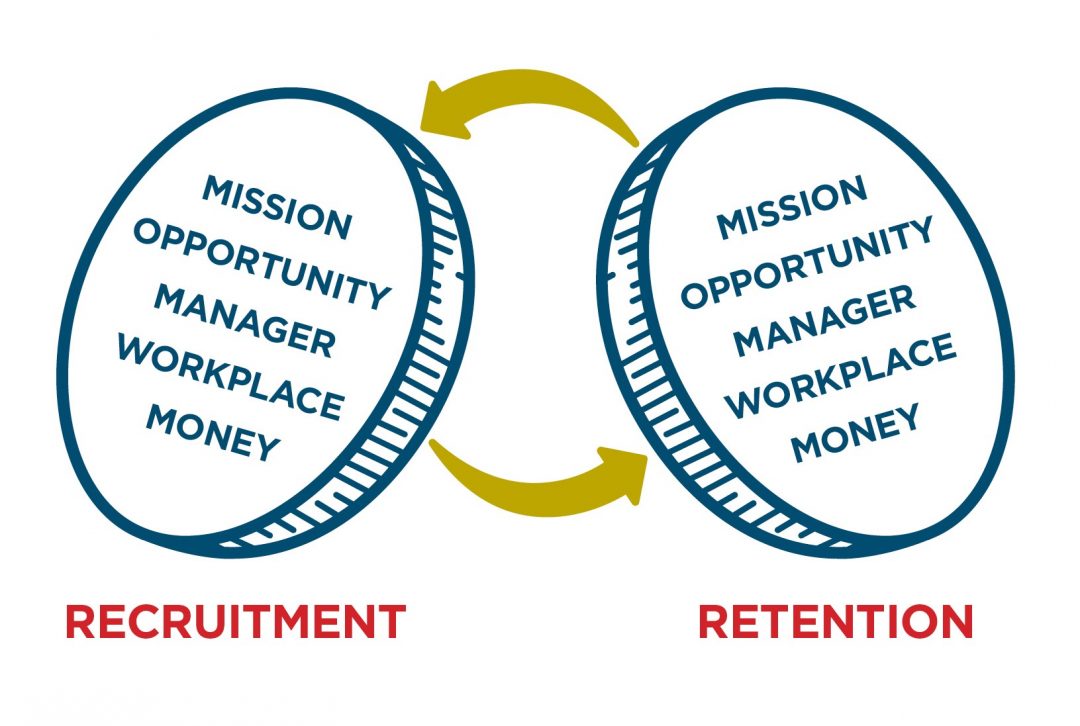Posted February 7, 2019
Philanthropy is a booming field—in 2017, Americans gave $410 billion to charities, which was a 5% increase from the previous year, the size of the average major gift has dramatically risen (gifts are now reaching the billions, not just the millions), and the return on investment for a full major gift program is very strong. Plus, the technological tools available to fundraisers are now sophisticated and highly effective. All indications are that the size of fundraising shops will continue to expand, and the types of nonprofits which can mount excellent fundraising operations will continue to diversify. For instance, food banks, organizations sheltering the homeless, and others serving populations which were formerly thought to be unable to engage sophisticated donors have now proven their missions to be compelling to philanthropic leaders.
Yet, as the field grows rapidly, the pool of qualified fundraisers has not been able to expand at the same rate. Fundraisers—especially in programs with major donors, which fuel the highest ROIs—still achieve their expertise through experience – a slow boat to leadership, to be sure. This shortage contributes a costly issue for nonprofits: high fundraising staff turnover. The average stay of a fundraiser is fewer than eighteen months. Furthermore, the 2017 Nonprofit Employment Practices Survey revealed that 81% of the surveyed organizations have not articulated a retention strategy.
After speaking with thousands of fundraisers, I’ve learned that their reasons for leaving their current positions are most often understood with 5 key factors:
“It’s the mission.”
If a nonprofit is at the forefront on delivering its highly-regarded mission, it will be most likely to attract and keep great fundraisers. Furthermore, the strongest and happiest fundraising teams have discovered how to successfully pitch the organization’s mission shortfalls as philanthropic opportunities. Where fundraisers are raising the bar by bringing needed resources to improve and impact mission delivery, they experience tremendous satisfaction.
“It’s the opportunity.”
A clear career path, access to training, and mentoring opportunities to work closely with organizational and philanthropic leaders – these factors are highly valued by fundraisers and supportive of retention.
“It’s the manager.”
Fundraisers may feel that their manager doesn’t value them or recognize their successes, their goals are unachievable, their resources are inadequate, or their manager isn’t accessible. When a fundraiser tells me that in their current job, they can do their best work and their professionalism is respected, I look for a great manager behind them. Good management matters.
“It’s the work place.”
If an organization lacks a healthy environment—perhaps by allowing sexist or other discrimination in the workplace—or if it provides a proper workplace but doesn’t respond to fundraisers’ workplace needs, fundraisers will be much less likely to stay. We find that institutions that proactively review policies and benefits with a strategic lens experience greater retention and recruitment success. A hot example is allowing employees to work remotely – sound policies and procedures can be put in place that make remote work effective while providing a competitive advantage.
“It’s the money.”
Though only rarely the sole reason a fundraiser decides to leave an organization, competitive compensation matters. To determine competitive compensation for fundraisers, look beyond a tight peer group of institutions; just as the competition for donors is cross sector and often national, so too is the competition for fundraisers.
If one of these factors is unsatisfactory, fundraisers may very well become open to new opportunities. Conversely, when these five conditions are met, the likelihood of retaining fundraising talent is high. Retention and recruitment are two sides of the same coin!

So how can fundraisers be best recruited and retained? Consider these strategies:
If You Are An Employee
- Do your best to stay 3+ years. There are exceptions to this advice, but to be eligible for leadership roles, it is important to always protect the nonprofit for which you work. ‘Sticking’ and finding opportunities where you are matters to the organization’s success. When you seek out and create an opportunity to improve their policy, raise more money, or manage up better, etc., you create the evidence for a leadership trajectory. As a recruiter, I see ‘stickiness’—the ability to be resilient and find a path to delivering an impact—as a leadership quality. The one major exception to this advice is if your current job is creating personal harm. Your first responsibility is to take care of yourself and, if it can’t be fixed, to leave.
- Be your own advocate. Discuss with your supervisor what you need in place for you to be successful. Though these discussions can be difficult to approach, there are plenty of resources to guide you. Consider beginning with Difficult Conversations: How to Discuss What Matters Most.
- If you believe in your organization’s mission but are unhappy, explore new positions where you now work (either lateral or a promotion). It can also be helpful to reference the career paths of those in your professional networks – if it’s worked elsewhere, your proposed path may be more compelling to the organization’s key decision makers.
- Become an active volunteer in a professional organization such as AFP, CASE, or WID. This will provide you with an opportunity to network with fundraisers who value their roles as mentors, who may be seeking new talent, and who want to give back through these organizations. The necessary ingredient to unlock their potential is to become an active member yourself.
If You Are An Employer
- Manage and plan. How are your fundraising goals set? Are they derived as a plug number, i.e. the amount you need to balance your budget? Or are they based on identified fundraising opportunities, on your organization’s strategic needs, its investment of resources, and considered an important aspect of overall planning? The better your planning, the more successful your fundraising will be, and the stronger your retention of fundraisers will be.
- Evaluate your compensation, benefits, and personnel policies for fundraisers. Often nonprofits have designed their compensation and personnel policies to meet the needs of their primary purpose, yet sometimes these policies don’t align with fundraisers’ needs. If your salary structure strongly rewards numbers of people supervised and/or the size of budget managed, your compensation may fall short for your major gift fundraisers who don’t supervise staff or manage budgets but bring in substantial revenue and are highly compensated in the marketplace.
- Invest in fundraising talent management. Select larger universities and hospitals have invested in and developed in-house fundraising talent management programs and seen significant ROI as a result. Though not always the case, some of these larger shop innovations can be adapted to smaller shops with fewer staff and less specialization.
Fundraisers, as a group, are likely to be committed and passionate. By helping them to succeed and do their best work where they are, employers can significantly increase the likelihood of both developing and retaining great talent.
We welcome your insights and questions
The marketplace for fundraisers is truly dynamic and continues to change. We would very much like to hear how your organization is approaching the challenges and new opportunities you face. Please feel welcome to reach out to me at sweber@developmentguild.com.



